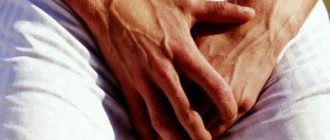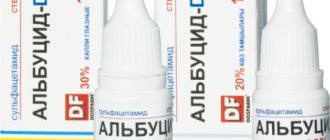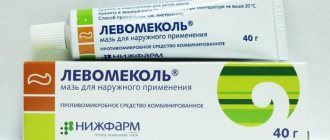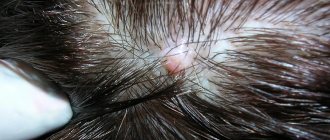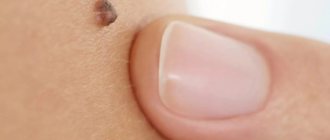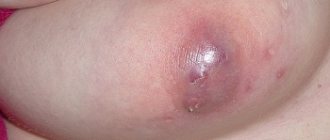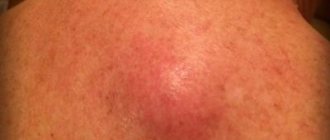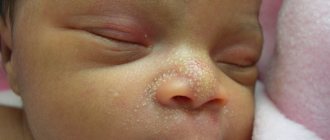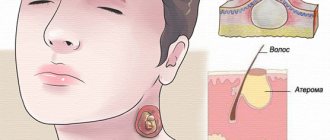How to distinguish a boil from a pimple
Before answering this difficult question, you need to know exactly what a pimple is and what a boil is. If you look closely at the inflammation, you will notice that they are not similar at all. Although the external resemblance is still present.
A pimple is an inflammatory process that affects the hair follicle and sebaceous gland. Moreover, the surrounding tissues are not involved in the pathological process. And the acne itself does not cause either an increase in temperature or symptoms of intoxication. Yes, it's unpleasant, but not fatal.
A furuncle is an inflammatory process that affects the hair follicle, sebaceous gland and surrounding tissues. The process is acute, with vivid symptoms that cannot be missed. The disease is popularly called boil.
There is one more significant difference. This is the causative agent of the disease. And in both cases it will be different.
For example, pimples, better known as acne, are caused by a microbe called Propionibacterium acnes. This is a completely “good” bacterium that is present on the skin of all people. And with good immunity, it cannot cause any inflammation.
The boil is caused by another microbe - Staphylococcus aureus. It is the most common microbe on our planet. It often causes hospital infections, that is, diseases that a patient can contract in a hospital.
In addition to boils, Staphylococcus aureus causes a lot of other diseases - pneumonia, osteomyelitis, endocarditis, sepsis, abscesses. Around the world, a huge number of people die every year from this bacterium.
This means that everyone should know how to distinguish a pimple from a boil on the face.
Reasons for the appearance of education
Boils on the back, in the vast majority of cases, have fairly typical causes - the penetration of a staphylococcal pathogen into the hair follicle. It happens less often that the infection has a mixed appearance. It can combine two pathogenic microorganisms - staphylococcus along with streptococcus.
Typical causes of occurrence are the penetration of a staphylococcal pathogen into the hair follicle.
Despite the fact that there are quite standard causes of the disease, it is also worth considering some other factors that, in one way or another, can provoke the manifestation of the disease. Among them, dermatologists identify problems such as:
- Failure of the patient to comply with personal hygiene rules. This applies primarily to washing, showering, bathing, etc. Poor quality soaps, shampoos or gels can also lead to the appearance of ulcers;
- Constant trauma to the skin, which opens the entrance gate to infection;
- Lack of treatment or poor treatment of various skin injuries (scratches, bruises, abrasions, wounds, etc.);
- Increased sweating;
- Overheating or hypothermia of the human body;
- Excessive contamination of the skin, primarily with dust particles;
- Decreased level of immunity, both local and general. This often happens during the transition of the human immunodeficiency virus to acquired immunodeficiency syndrome;
- The person is too overweight;
- Treatment of certain diseases with certain drugs. Among them, it is worth highlighting Methotrexate, Azathioprine, Mercaptopurine, etc.;
- Stressful situations that make a person too nervous;
- Imbalance of hormone levels during adolescence;
- The presence of certain skin diseases localized on the back and characterized by symptoms such as itching. Read more about Itchy back in children and adults here >>
Read also: Dorsopathy: symptoms, causes, treatment.
Thus, boils on the back in men can have completely different causes. Despite this, all these diseases, regardless of the factors of occurrence, belong to the same classification point.
In ICD-10 (International Classification of Diseases, 10th revision), furunculosis belongs to the class “Diseases of the skin and subcutaneous tissue,” the group “Infections of the skin and subcutaneous tissue,” and has code L02.
Main differences
Pimple and boil are inflammatory diseases. There is much in common between them, but there are also significant differences. The main ones have been described above. But what to do if inflammation appears on the skin?
- Wash your hands with soap and touch the sore area. If there is no pain, then it is a common pimple. If pain appears, and it begins to increase, and the skin itches, then most likely it is a boil.
- The boil looks like a small dense red ball. Moreover, not only the tubercle itself will be red, but also the surrounding tissue. It rises above the skin in the form of a cone with an obvious abscess in the very center.
- There will be discomfort in this place and the pain will be quite noticeable. This will continue until the boil opens and the accumulated purulent contents, along with necrotic masses, appear outside. This process is called boil maturation.
- How to distinguish a pimple and a boil at an early stage? You can look at the sizes. An ordinary pimple is usually small. The boil will be several centimeters in diameter from the very beginning. The redness will not have clear boundaries; it is said to be diffuse. With acne, the redness is concentrated only at the site of inflammation and does not spread further.
- Symptoms of inflammation with a boil will increase every day. And it doesn’t matter what part of the body the boil appears on.
READ ALSO: Types of rashes in children - Rashes (rashes)
How to distinguish a pimple from a boil on the butt, in the ear or in the nose? It is important to remember that a boil is an independent disease that has not only symptoms at the site of inflammation, but also general manifestations.
Possible consequences and complications
The boil has a fairly clear treatment according to a certain method in accordance with generally accepted rules. If a sick person decides to carry out therapy at home, this may lead to some complications or other adverse consequences.
The boil should not be squeezed out
Most often this happens when the patient decides to squeeze out the abscess. In this case, it may happen that the infection spreads to other cells of the body. In addition, the infection in such a case can easily spread through the human bloodstream. The same applies to touching the formation during shaving or other procedures.
In extremely rare cases, a boil can provoke the development of such false and dangerous diseases as meningitis, sepsis, lymph node thrombosis, septic phlebitis of the brain, lymphadenitis, etc. All of the above diseases can not only lead to a deterioration in a person’s general health, but also cause death if they are treated incorrectly or incompletely.
Symptoms
How to determine that a boil is beginning to develop under the skin? Of course, according to the existing symptoms. They can be local or general.
Local symptoms include:
- A painful swelling suddenly appears on the skin, dense when palpated with a clearly defined center.
- The surrounding skin becomes red. The redness zone has no clear boundaries.
- Pain is the main symptom. Moreover, it appears not only when touched or rubbed by clothing, but also becomes an independent symptom.
- The site of inflammation is very and constantly itchy.
- The symptoms increase every day, the swelling and redness increase in size, the itching becomes unbearable.
- After about a week, the purulent contents finally break out and the boil opens.
In addition to the local manifestations of the disease, which were described above, the patient may also complain of general signs of malaise. This:
- Prostration.
- Increased body temperature.
- Headache.
- Enlarged lymph nodes, which are located near the boil.
If at least one of these signs appears, you should immediately consult a doctor. You can’t joke with boils - under no circumstances squeeze them out yourself, don’t heat them, and don’t use ointments that are intended for treating acne in treatment.
Treatment of boils
The frequent appearance of boils indicates a weakened immune system. In such situations, it is necessary to undergo additional examination by a doctor and begin treatment immediately so that the boils do not spread throughout the body and cause blood poisoning with bacteria. Patients with high fever should adhere to bed rest and a strict diet with vitamins containing iron in large quantities. A complicated course of the inflammatory process or an advanced stage of the disease requires mandatory hospitalization and constant monitoring by medical personnel. Treatment may include antibiotics and detoxification therapy.
Boils on the body that are not accompanied by high fever, headaches or general malaise can be treated on an outpatient basis using medications or traditional recipes. It is forbidden to crush purulent formations and warm them up. This can significantly impair the healing process and also leave terrible scars.
Only complete tissue restoration at the site of inflammation is considered a successful completion of treatment. Repeated suppuration can be caused by serious health problems, so it is better to begin treatment for a boil after correct diagnosis of the causes of its formation.
Removing a boil in a medical facility
Boil removal can be done by a doctor using ultraviolet rays. After the boil has matured, the surgeon punctures the area with inflammation with a solution of novocaine with an antibiotic. Only after local anesthesia can a specialist open the purulent focus and drain the contents of the capsule.
Hydrogen peroxide or sodium chloride is used to treat the resulting wound. The formation of connective tissue at the site of inflammation is a sign of good healing. To prevent the scar from being so noticeable, it is recommended to use compresses with vaseline oil, syntomycin emulsion or fish oil.
How to get rid of boils at home?
A boil can be cured on its own by applying anti-inflammatory ointments and daily lotions. Such methods are used only in the absence of complications of the disease.
The area of inflammation should be immediately treated with antiseptics, and the skin around the boil should be lubricated with alcohol (boric, medicinal or salicylic) or iodine. After opening the abscess, you can use ointments that help relieve inflammation and have an antimicrobial effect. Examples of such drugs with a wide range of actions are:
- Dimexide.
- Shostakovsky's balm.
- Biopin.
- 2% ointment of Mupirocin and Fusidic acid.
Vishnevsky ointment is the most popular remedy in the treatment of boils. It should be applied according to the following scheme:
- put a bandage folded in 4 times on the boil;
- apply ointment on top, then a layer of bandage;
- cover everything with cling film and secure with adhesive tape.
The dressings should be changed daily and applied until the purulent mass is drawn to the surface by the ointment. As a result of using this scheme, the boil should burst. When the abscess bursts, the wound must be treated with an antiseptic, then the bandage must be applied again.
Only a doctor can determine the need to prescribe antibiotics. The main drugs of this group used in the treatment of boils with extensive inflammation are:
- Oxacillin;
- Vancomycin;
- Linezolid;
- Cefazolin;
- Amoxicillin.
A lotion made from a solution of water and cologne in equal quantities (for example, Chypre, Triple) has a good effect. A bandage soaked in such a liquid must be applied to the boil and secured with cling film to prevent evaporation. You need to secure the lotion with an adhesive plaster. As practice shows, already on the 3rd day you can get rid of the purulent core using this composition.
In children
In children, boils occur no less often than in adults. How to distinguish a pimple from a boil in a child, for example, under the armpit on the face, neck, buttocks or genitals?
The symptoms of the disease will be exactly the same as in adults. But with one noticeable difference - children suffer purulent inflammation much more severely than adults. They become capricious, refuse to eat, become lethargic and lose interest in their surroundings.
It is important to consult a doctor at the first symptoms of the disease. And even if you could not independently distinguish a boil from a pimple in a baby, it is better to show your baby to a specialist than to self-medicate, which can be very dangerous and often leads to death.
READ ALSO: Caring for problem skin - Recipes for beauty and health
What is the difference between a boil and a carbuncle?
An accumulation of abscesses, which is accompanied by purulent-necrotic inflammation, is called a carbuncle. The formation is most often localized on the back, buttocks, and back of the head.
Carbuncle is a severe purulent disease in which a large purple-red lesion with numerous purulent cavities forms on the skin. The disease proceeds much more complex than a boil, forming a significant affected area. Pus accumulates not only in the center of the abscess: in this case, many cavities filled with exudate are formed. The difference between a boil and a carbuncle is that the first manifests itself locally, and the second affects the general condition of a person (symptoms of intoxication occur: muscle pain, a feeling of fatigue, fever, migraine).
On the butt
A purulent boil on the butt is very common. Moreover, these will not necessarily be children; such a misfortune does not bypass adults either.
There are 2 main reasons for the appearance of boils in this area.
The first is hypothermia. This could be sitting for a long time on a cold surface, such as steps, or swimming in cold water in a river.
The second is constantly wearing synthetic underwear, which does not allow the skin to breathe. Because of this, Staphylococcus aureus receives ideal conditions for reproduction, which causes an active inflammatory process.
How to distinguish a pimple from a boil on the butt? The boil that appeared on the butt does not have any special symptoms. The manifestations will be the same as described above.
A boil that jumps up in this place always causes a lot of inconvenience and interferes with sitting and lying down. Therefore, it must be treated as quickly as possible.
Symptoms of boils
In appearance, it is not difficult to distinguish and identify a boil, since it is noticeable, and even in the area of its appearance, pain can be observed. The symptoms of acne are as follows:
- Swelling.
- Redness of the skin.
- Itching.
- Hair in the center of the pimple.
- Soreness.
A few days after the boil appears, the skin begins to thicken, and it takes on a bright red hue. Over time, the swelling only increases, the pimple itself begins to pulsate, and the pain increases. At the development stage, the boil can reach up to three centimeters in diameter.
Over time, a purulent rod may appear at the site of the boil, on the skin of which a small blister of pus appears.
When a boil develops, a person may experience the following symptoms:
- Temperature increase.
- Fatigue.
- Headache.
- Weakness.
- Muscle pain.
- Inflammation of the lymph nodes.
At the last stage of development of the boil, the pimple bursts, pus flows out of it, and then the boil heals. The ripening period lasts on average ten days.
Sometimes laboratory tests are required; for this, pus will have to be squeezed out of the boil. If more than three pimples appear on a person’s body, then you need to donate blood to determine the level of inflammation.
The appearance of a single boil should not be considered as evidence that the body is weakened. The reason for the appearance of one purulent point may not be an infection in the body, but only a certain combination of circumstances.
However, even if only one boil appears under the arm, you should still pay some attention to checking your health in order to protect yourself in the future.
But to be completely sure that it is a boil and not a pimple that has appeared, you need to understand what a boil looks like. If this is it, then you can begin to study the question “how to treat a boil.”
To begin with, it’s still worth figuring out how exactly a boil on the face differs from a pimple. In fact, there are many similarities between their appearance, and for this reason it is not so easy to understand what exactly we are dealing with.
How to distinguish a subcutaneous pimple from a boil
Inflammation with a boil and a subcutaneous pimple is different. The easiest way to compare them is in a table.
| Subcutaneous pimple | Furuncle |
| Looks like a red or white bump | Looks like a lump that is always red |
| Doesn't have a cone in the middle | There is a cone in the middle from which pus will ooze |
| Itches, but not too much | The itching is felt at any time of the day and is very strong |
| Pain is moderate | The pain is significant |
| Symptoms do not increase, they are at one stage | Symptoms are getting worse every day |
| No temperature rise | There is a fever |
| Most often appear on the face | Can appear on any part of the body, including the face |
| Remain in one state for a long time | A week later the boil is already opening |
| No additional symptoms appear | General symptoms of intoxication may appear - headache, weakness, lethargy |
| Rarely appear in children | Can appear at any age |
Clinical manifestations and symptoms
There are several stages in the development of the disease, each of which is characterized by its own symptoms:
- At the infiltration stage, a brightly hyperemic edematous infiltrate forms around the hair follicle. The skin is red, tense and painful. Some patients experience symptoms of general intoxication: fever, headache, aching joints. The area of infiltration and swelling gradually increases, and the disease moves to the next stage.
- Formation of a purulent-necrotic core, or the stage of suppuration. By 3–4 days, a purulent core forms, which is visible under the tense skin. The patient has a high fever and severe pain.
- Opening. At this stage, the boil opens spontaneously or with the help of surgery, and the pus comes out. The patient’s well-being improves sharply, his temperature drops and pain subsides.
- Scarring. After rejection or surgical removal of the purulent core, a small depression remains, which is gradually filled with granulation tissue and begins to scar. Clinical symptoms at this stage no longer bother the patient.
Important! There are different options for the clinical course of a boil. It can end in the first stages or cause complications.
How to get rid
It takes a long time to treat a boil, and therapy should only be comprehensive. Under no circumstances should you self-medicate. Therapy should only be prescribed by a doctor. As a rule, with proper and timely therapy, complications can be avoided. But in some cases they may appear.
- If there are more than 3 boils on the body.
- If a boil has formed in the area of the nasolabial triangle.
Treatment is based on the use of antibacterial ointments. Usually this is ichthyol, levomekol, Vishnevsky. Some recommend starting to take oral antibiotics in tablet form. This is most often biseptol, ciprofloxacin or ampicillin.
You can give 10 injections of calcium chloride or calcium gluconate intravenously.
Ultraviolet irradiation of the inflammation area helps speed up the healing process.
If the boil is too large and causes a lot of inconvenience, it is opened, the pus is cleaned out, and drainage is installed. After such a procedure, a scar always remains.
Causes of this disease
A furuncle is an acute inflammation of the hair follicle and adjacent tissue. If several boils appear on a person’s body at once, the disease is called furunculosis.
READ MORE: How lingonberries differ from bearberries
The cause of this disease is pathogenic microorganisms, most often staphylococci and streptococci. Promote the development of the inflammatory process:
- Microtraumas, scratches and damage to the skin. Sometimes one unsuccessfully squeezed pimple becomes the cause of the development of a large boil.
- Hypothermia, stress, decreased general immunity.
- Disturbances in the digestive tract.
- Some concomitant diseases, such as diabetes.
These formations can be localized on any part of the body where there are hair follicles. Favorite locations are the face, buttocks and armpits.
The main etiology (origin) of a boil is the seeding and rapid reproduction of pyogenic microbes on the skin.
Staphylococcal and streptococcal flora are always present on the human body, but in small quantities, and when exposed to provoking factors, microbial colonies begin to actively grow.
1. Features of the epidermis, sweating, thermoregulation and sebum formation:
- excessive sweating;
- oily skin;
- constant microtraumatization of the dermis (scratching, picking, rubbing against clothes, etc.);
- skin irritation due to constant contact with dust, smoke, harmful chemicals in production and at home;
- poor body hygiene.
2. Skin diseases:
- dermatitis;
- pyoderma;
- erysipelas;
- eczema;
- burns and injuries (wounds, abrasions, cracks).
3. Decrease in the body's defenses:
- after toxic poisoning or serious infections;
- for immunodeficiencies.
4. Taking certain medications:
- steroid hormones;
- cytostatics and chemotherapy courses;
- immunosuppressants during the treatment of autoimmune diseases.
5. Endocrine disorders:
- diabetes;
- pathologies in the functioning of the thyroid and parathyroid glands, adrenal glands, pituitary gland;
- increased production of testosterone in the body.
6. Eating disorders:
- excessive consumption of fatty and sweet foods;
- lack of vitamins and minerals in the diet.
7. Using low-quality or inappropriate care products or cosmetics.
How to get rid of it at home
The main rule for treating a boil is not to squeeze out the pus.
Every day, Vishnevsky ointment, levomekol or ichthyol should be applied to the site of inflammation. Secure the compress with a bandage or adhesive plaster.
Change the bandage morning and evening. Gradually, the ointment will begin to draw out the pus, and the boil will begin to open. You can help this process a little - wash your hands with soap, treat them with alcohol, lubricate the abscess and the skin around it with alcohol. Then use your fingers to gently press on the skin that surrounds the site of inflammation. So the pus will begin to come out more actively.
READ ALSO: The tonsil hurts on one side: how to treat it if the tonsil is swollen and inflamed |
After the pus begins to come out, the ointment compress must be continued. The entire process from the start of the autopsy to full recovery can take a couple of weeks.
When the pus stops secreting, the wound should be lubricated with brilliant green or iodine and treated until the wound surface is completely healed.
Treatment
It is necessary to treat chiria and boils, since they are one disease, using the same methods, but preferably without self-medication. Medical consultation is necessary, even when you are confident that you know how to treat and how to treat chiria. The purulent formations themselves may not be as dangerous as their consequences caused by the lack of qualified medical therapy.
So, to the question: “how to treat chiria?” The attending physician must answer. Medical treatment depends on the nature of the disease, the clinical condition of the patient and the presence of aggravating factors.
Boils are treated mainly on an outpatient basis, if there are no contraindications, complications or complex lesions of the facial area. Therapy consists of several procedures:
- disinfection and pain relief;
- antibiotic and anti-inflammatory drug therapy;
- opening of the purulent core, drainage of purulent masses;
- the use of physiotherapy;
- vitamin therapy.
Traditional methods
Traditional medicine methods can help slightly reduce inflammatory manifestations. But before you start using these recipes, you should consult your doctor.
- Pine baths or compresses. For 1 liter of water, 5 drops of any pine oil are enough. The water should not be too hot, room temperature is best. A hot compress will only worsen the situation and the process will spread over a larger area.
- Compresses using sea salt.
- Apply a piece of fresh aloe leaf to the site of inflammation and secure with adhesive tape. Carry out the procedure up to 3 times a day.
- Apply a piece of fresh garlic to the site of inflammation, peeled and peeled and cut into two parts. Change a couple of times a day.
Doctors recommend combining all these methods with specialist prescriptions.
Folk remedies
There are many different folk recipes with which you can overcome the symptoms of an unpleasant disease. To remove a boil at home, the following traditional medicines are often used:
- Burdock. To do this, you need to boil burdock leaves in milk, and then apply them to the affected areas on the body overnight.
- Aloe. Aloe leaves are a traditional remedy for the treatment of various purulent diseases of the skin, including the fight against furunculosis. However, it is worth paying attention to the fact that the medicinal properties of plants appear in the fourth year of their life. The juice contained in aloe leaves helps the pimple to mature, after which all the purulent masses are drawn out. To do this, you need to cut the leaf lengthwise and apply it to the affected areas on the body.
- Onion. Onion is another folk medicine that is capable of sucking out pus from tumors well. To do this, you first need to boil the onion head, then apply it to the affected area overnight, securing it well with gauze or another bandage.
- Rye flour and honey. These products must be mixed until a dough-like mass is obtained, after which the product is applied to the affected areas, bandaged well and left overnight.
- Laundry soap. To treat a boil, you need to grind the laundry soap and pour plain water for 15 minutes. Apply the thick mixture onto gauze and apply to the resulting boil. The bandage must be changed every three hours.
- Vishnevsky ointment and fir oil. This folk remedy is very effective for treating boils at home. A mixture of Vishnevsky ointment and fir oil has an excellent warming effect, which accelerates the maturation of the boil. To prepare the mixture, you need to mix 7 parts of fir oil with 3 parts of Vishnevsky ointment. This composition is also ideal for the treatment of internal simple acne. Fir oil has analgesic and antimicrobial properties, and Vishnevsky ointment helps cleanse inflamed skin of various bacteria, accelerating the maturation of the boil and further healing.
When treating boils and pimples with purulent contents at home using folk remedies, it is necessary to remember that such treatment methods can only be used at an early stage of the development of the disease. Otherwise, treatment of this disease should be carried out by a qualified specialist.
Complications
Unlike ordinary pimples, even subcutaneous ones, a boil can cause a variety of complications. And the presence of a small scar on the skin after the abscess has completely healed is the easiest option.
- Vascular thrombosis at the site of the boil.
- The appearance of a carbuncle with inflammation, which will spread to several hair follicles.
- Abscess and blood poisoning when Staphylococcus aureus enters the bloodstream due to improper or untimely treatment.
- Meningitis when boils are localized on the face or neck.
- Glomerulonephritis when the abscess is located on the butt, thighs or back.
- Inflammation of the joints.
Doctors always consider a boil as a dangerous disease that requires hospital treatment. This is another distinguishing feature of a pimple from a boil.
How is the treatment carried out?
Treatment of the disease depends on the stage and the presence of associated complications. The disease is treated on an outpatient basis, with the exception of complicated forms and facial boils. At the stage of maturation of the purulent-necrotic rod, the area of the boil is locally disinfected and anesthetized. Systemically, the patient is prescribed antibiotics, anti-inflammatory and painkillers. After the stage of abscess formation, when the purulent core has matured, the boil is opened surgically. After opening and draining the pus, a drain is placed into the cavity of the boil and an antiseptic bandage is applied. The patient continues to receive antibiotics and anti-inflammatory drugs at this stage. At different stages, various types of physiotherapy are used to speed up the resolution of the inflammatory process. In addition, the patient is prescribed to follow a diet with limited hot and spicy foods. Additionally, the patient may be prescribed multivitamins that help restore the body. A boil, or boil, is an acute purulent-necrotic disease of the hair follicle, which is accompanied by the development of unpleasant symptoms. The disease is treated conservatively or surgically depending on the stage of formation and the presence of complications.
Symptoms
Medical research shows that pimple represents the initial stage in the development of pathological processes of inflammation in the epidermis. The boil is the final stage. The inflammatory process develops so strongly that it can affect large areas of the skin. It is necessary to conduct a diagnosis to understand whether a pimple or boil has formed on the body. Distinctive symptoms will help to accurately determine the type of formation.
There are characteristic signs by which you can tell exactly how a boil differs from a pimple:
- Developing furunculosis causes discomfort and discomfort not only at rest, but also during human movement. Sometimes the formation of a pimple is also accompanied by mild pain.
- At the site of maturation of the formation, severe redness can be seen.
- When an abscess forms, a swelling appears and can be seen with the naked eye. In some situations, the affected area swells and a compaction forms.
- The skin in the area where inflammation occurs becomes hot.
If there is at least one sign from this list, then you should consult a doctor, as a boil is forming on the body. There are distinctive symptoms of a pimple that will help you more accurately determine what inflammatory processes are developing on the skin:
- The ripening process is not accompanied by strong redness around the formation.
- As a rule, pimples appear small.
- Unlike a boil, it matures faster.
- Pathological processes affect only the top layer of skin.
- There are no significant changes in skin temperature.
Disease prevention
In order not to know what boils are, you need to pay due attention to prevention, including performing the following procedures:
- Maintain hygiene.
- Treat all wounds, cracks and damage to the skin.
- Strengthen immunity.
- Avoid hypothermia.
https://www.youtube.com/watch?v=mOPaYZHKHlc
Some doctors consider such a disease as the development of boils to be a number of dangerous diseases, since it can cause various complications if treatment is not resorted to in time.
Be healthy!
Preventive measures:
- compliance with personal hygiene rules;
- adhere to proper nutrition;
- cure chronic diseases;
- make sure that clothes and shoes do not rub the skin;
- increase immunity;
- do physical education;
- in case of endocrine disorders, do tests and monitor biochemical blood parameters;
- Avoid hypothermia, overheating and skin injury.
An important role in the prevention of furunculosis is played by timely identification of symptoms and periodic blood tests by persons who are at risk for this disease.
Prevention of boils is aimed at eliminating the causes of the rash. Therefore, following these simple rules makes it possible to cure the disease and prevent the occurrence of furunculosis.
Post Views: 1,712
